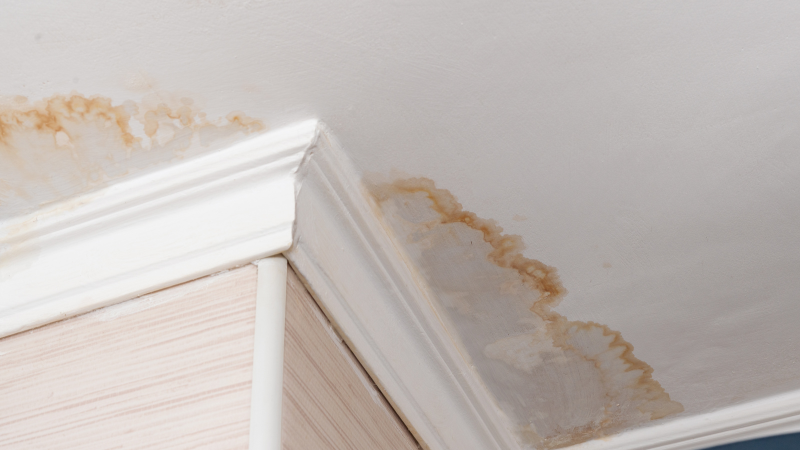The article author is making a number of good points regarding How to Repair and Prevent Bathroom Water Damage in general in this post down below.

The restroom is incredibly prone for damp buildup and also prospective water damages as a result of the constant use water in it. This write-up uses basic examination methods to assist identifying water damages threats.
The constant use water in the washroom makes it exceptionally at risk for wet buildup and also potential water damage. By inspecting it regularly, you can lower water relevant problems.
The complying with set of evaluations is simple to carry out and should be done as soon as in every 3 months in order to keep your bathroom in good shape and also to stop prospective water damages caused by the bathtub, the shower, pipeline joints and also plumbing, sinks, cupboards, as well as the toilet
Do not neglect doing these evaluations and be complete while doing them. Keep in mind that these simple examinations can conserve you a lot of money by giving very early indicators for water damage
Sinks and also Cabinets
Sinks and closets are subjected to dampness as well as humidity day-to-day as well as are typically overlooked. Evaluate on a regular basis under the sink and on the kitchen counter above it. Repair any drip in the catch as it may recommend drain troubles. Browse the sink, slow-moving draining pipelines may show a blocked drainpipe. Change sink seals if they are cracked or loosened.
Bath tub as well as Shower
The shower and bath tub require unique interest and also maintenance. Check the ceramic tiles and change if broken. See to it that there is no missing grout in between the tiles. Examine and also replace fractured caulking at joints where the walls fulfill the floor or the bath tub. Blocked drains pipes as well as pipelines problems will protect against the bathtub from drying out and might indicate severe troubles below the bath tub. Consult with a specialist immediately to avoid architectural damages. Take note of stainings or soft locations around the bathtub wall surfaces as they may suggest an inner leak.
Plumbing
Signs for water damage are tough to spot given that the majority of pipes are installed inside the walls.
Pay unique attention to flooring as well as wall surfaces dampness and spots as they might indicate an undetectable plumbing trouble. Check wetness degrees in adjacent rooms also.
The Commode
The commode is a susceptible water junction. Inspect the water lines and also search for leaks around the bathroom seat, in the tube, and under the water tank. If you detect any type of indicators of dampness on the floor around the toilet, check for leakages in the toilet edge and also tank seals.
Understand that hanging bathroom dish antiperspirants increases the chances for obstructions.
Water Damage Signs In The Bathroom To Avoid Cleanup
Musty smell
This is one of the easiest signs to catch because musty smells are so odorous. The damp, earthy, moldy smell should be a big red flag. The smell will develop when moisture gets trapped in surfaces, and begins to facilitate mold growth. Leaking pipes under cabinets, inside walls, and behind shower fixtures will cause moisture to stay trapped and not dry, which will lead to mold growth and spread. As soon as you notice any musty smells in your bathroom, have it checked for hidden water damage and cleanup signs.
Visible mold
If the smell isn’t there to give it away, sometimes you will actually see mold growth. Finding mold in your bathroom is a serious problem, because mold is very harmful to your health. By the time mold growth is visible, it also means that water damage has already occurred and been present for some time. The only way the mold problem can be resolved is to find the source of the moisture and get it stopped. To safely and adequately remove mold, you need to have professionals handle the remediation. Do not waste any time in getting mold problems addressed, fixed, and sanitized so that you can protect you and your family from the many respiratory symptoms caused by mold exposure.
Damaged floors
Bathroom floors should be able to withstand some exposure to water while still remaining in good condition. However, when excess exposure or water leaks occur, they will begin to damage even the most water-resistant flooring. If you notice any cracking, bubbling, staining, or warping on your bathroom floors, there is probably a water leak somewhere causing the distortion. If you notice areas of the floor have become softer, or even have a spongy feeling, there is probably damage to the subfloor. Subflooring is typically made up of plywood. When plywood is exposed to water or moisture, it will absorb it. Once it has become saturated, the weight of the excess water will cause the wood to swell and soften. Check the floors in your bathroom frequently to catch any of these sings before they lead to damaged subflooring.
Changes on walls
When water leaks behind walls, it will cause changes in the drywall. Peeling plaster, blistering paint, and soggy wallpaper are all good indicators that excess water is building up behind the wall. Water leaking behind drywall will cause it to swell and be soft to the tough. If you start to notice gaps along the trim of your walls, or where tile meets the wall, it could also be a strong indicator that there is a leak behind the wall. Any changes, distortion, or damage on the walls should be evaluated as soon as you notice it to prevent further water damage and cleanup.

As a reader about How to Fix a Water Damage Bathroom, I figured sharing that excerpt was a good idea. Sharing is caring. Helping people is fun. I value reading our article about Looking for Signs of Water Damage in the Bathroom.
Quote & Schedule